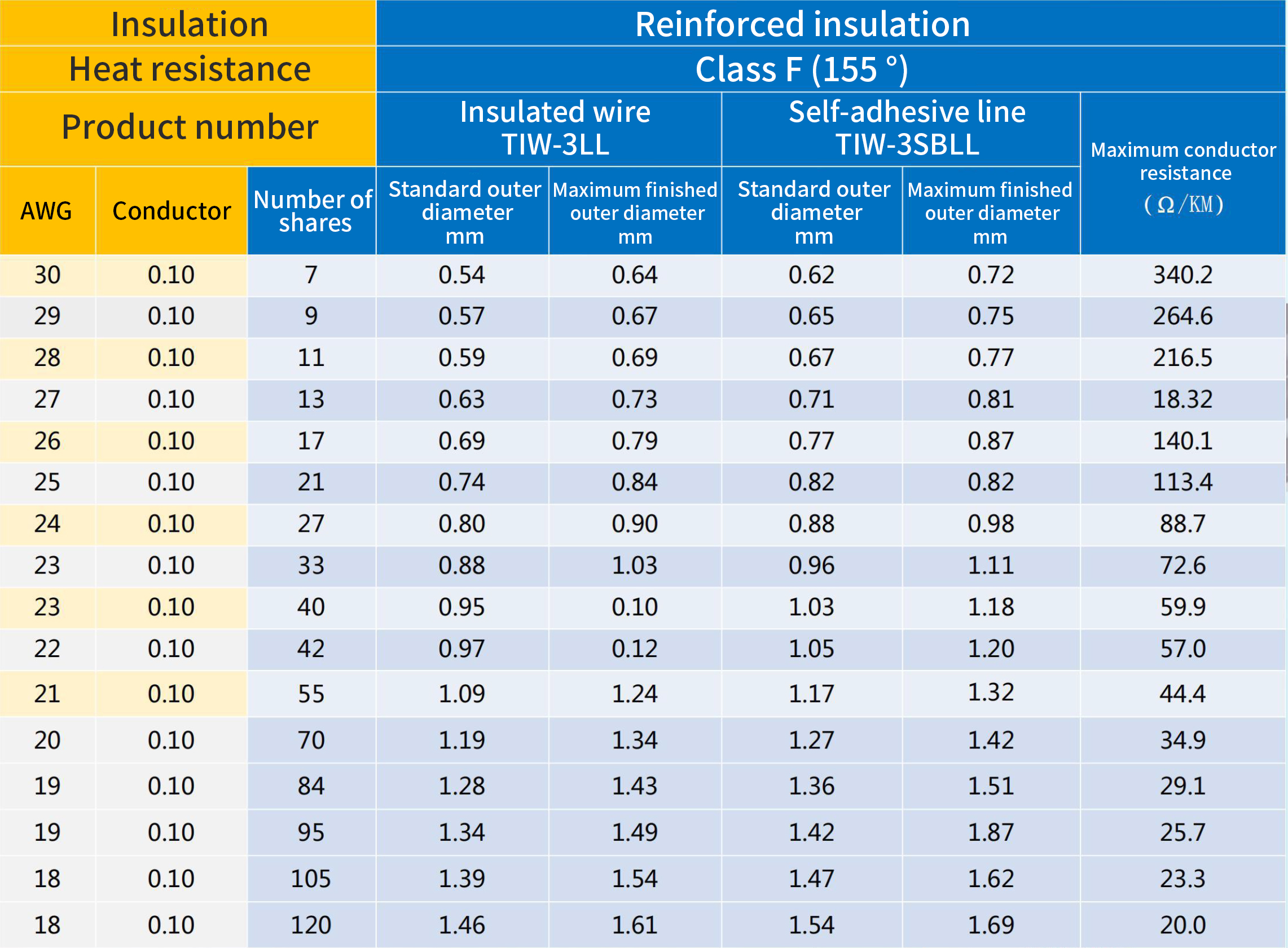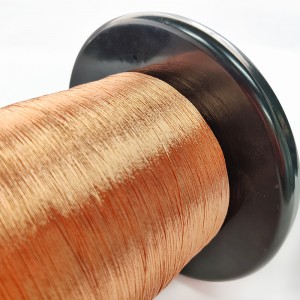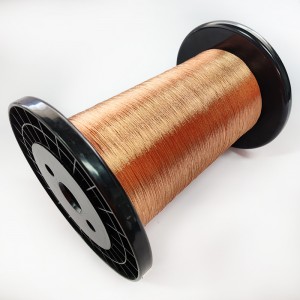High temperature-resistant grade enamelled multi-strand bare copper color stranded wire fast charging of power supply for automotive energy vehicles
stranded wire
1、Structure and material
1. Stranded wire: also called multi-stranded wire, refers to the concentric stranding of multiple strands of single enamelled wire of the same specification, and the stranding direction of each layer is alternately reversed.
2. Strand length: the ratio of the set effective measuring distance to the number of turns turned is the twist length (pitch) of the stranded wire
3. Number of shares: as specified by the customer;
4. Twisting direction: refers to the take-up direction in the production process, which is generally divided into positive (S), i.e. clockwise direction, and reverse (Z), i.e. counterclockwise direction.
2、 Application standard
Refer to IEC JIS GB and other standards of enamelled wire
3、Inspection specification
1. Appearance requirements: visual appearance is glossy, without mechanical damage to the paint layer, not easy to scrape off the paint film with nails, no twisted loose wire, jumping and other phenomena, and the wiring is neat and good.
2. Twist length requirement: take 500mm sample, leave 100mm allowance at both ends of 500mm sample, take a strand of enameled wire from the starting end to loosen, and gradually loosen the number of turns from end a to end b, and record the ratio of the number of turns to the measured distance. The obtained value is the twist length of the stranded enameled wire, take one decimal place, and the general tolerance is ± 1mm.
3. Calculation method of completed outer diameter of stranded wire Z: D=1.155 ×√ N × d
D=stranded wire Z large outer diameter coefficient=1.155 N=number of strands of stranded wire d=single enamelled wire Z large finished outer diameter coefficient=1.155
This calculation formula can only be used for reference.
4. Inspection of breakdown voltage of enamelled stranded wire: fold each sample with a length of 500MM in half and twist it according to the setting in Table 1. After twisting, cut the ends of the sample and leave the middle length of 120MM. The end of the wire is divided into two according to the number of strands. One end is in the open circuit state, and the other end is immersed in tin as the measuring end. Clamp one of the tin dipping parts with the positive electrode and the other with the negative electrode, and then open the instrument switch for testing. The principle is to uniformly raise the voltage until the sample paint film breaks down. At this time, the value displayed on the instrument is the voltage value of the sample.
5. Stranded insulated wire is made of multi-stranded enameled wire through machine stranding, and its voltage shall be determined according to the number of strands. The voltage standard will be lowered as the number of strands increases. For details, multiply the ratio according to the standard of enameled wire. Refer to (JISC3202-1994).
5.1 When the number of strands (N) is less than 20, the breakdown voltage of stranded wire is V=the breakdown voltage of single enamelled wire * 90%.
5.2 When the number of strands is 20 ≤ N < 60, the breakdown voltage of stranded wire V=the breakdown voltage of single enamelled wire * 80%.
5.3 When the number of strands is 60 ≤ N < 120, the breakdown voltage of stranded wire V=the breakdown voltage of single enamelled wire * 70%.
5.4 When the number of strands is N ≥ 120, the breakdown voltage of stranded wire V=the breakdown voltage of single enamelled wire * 60%.








